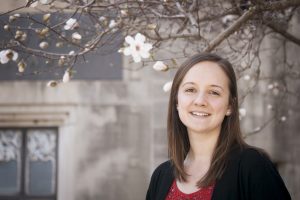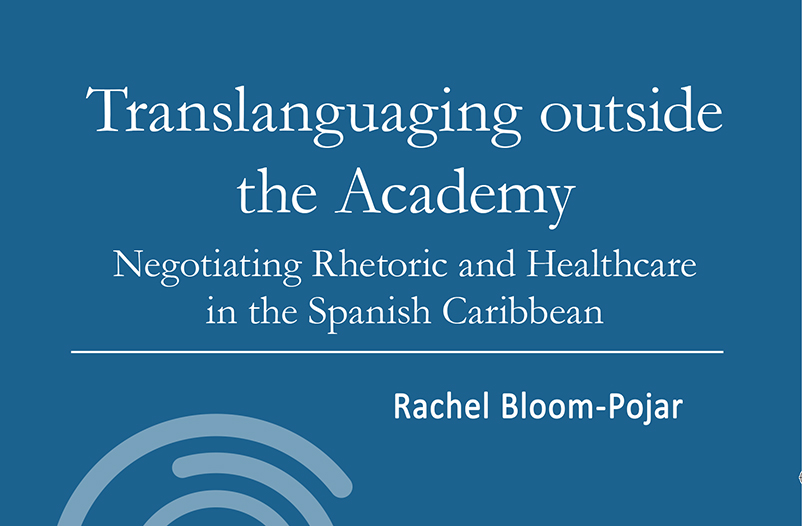This post was written by NCTE member Rachel Bloom-Pojar.
 Sometimes our students need to go outside of the contexts where they’re comfortable to see what they have come to know as “the way things are” in a new light. That’s why study abroad experiences can have so much impact—students often return with a deeper understanding of how difficult it is to learn a new language, how poverty and racism play out across contexts, and how learning can happen outside of classrooms. Sometimes, just moving outside familiar spaces can help them recognize the rhetorical adaptability that’s necessary for navigating communication across linguistic and cultural differences.
Sometimes our students need to go outside of the contexts where they’re comfortable to see what they have come to know as “the way things are” in a new light. That’s why study abroad experiences can have so much impact—students often return with a deeper understanding of how difficult it is to learn a new language, how poverty and racism play out across contexts, and how learning can happen outside of classrooms. Sometimes, just moving outside familiar spaces can help them recognize the rhetorical adaptability that’s necessary for navigating communication across linguistic and cultural differences.
The same can be said for teachers and researchers: sometimes we need to step outside of familiar contexts in order to learn and think about concepts in new ways. That’s what I hope my book, Translanguaging outside the Academy: Negotiating Rhetoric and Healthcare in the Spanish Caribbean might do for the NCTE community and others.
In it, I discuss how health professionals and students from the United States worked with residents and community health leaders in two rural towns in the Dominican Republic to run summer health clinics. Drawing from interviews and field notes from my work with the program, I describe collective approaches to working across linguistic differences and a rhetorical approach to translanguaging.
You might ask, what exactly is translanguaging? Ricardo Otheguy, Ofelia García, and Wallis Reid define translanguaging as “the deployment of a speaker’s full linguistic repertoire without regard for watchful adherence to the socially and politically defined boundaries of named (and usually national and state) languages” (283).
Additionally, García and Li Wei explain that “in its transdisciplinarity, translanguaging enables us as speakers to go beyond traditional academic disciplines and conventional structures, in order to gain new understandings of human relations and generate more just social structures” (42).
Translanguaging has been written about by a variety of scholars in educational linguistics, a field that teachers and researchers interested in translingual writing and rhetoric can learn from. (To read more on translanguaging in literacy studies, check out Steven Alvarez’s work on community literacies, confianza, and brokering tareas.)
While sometimes referred to as synonymous with translingualism, translingual practice, code-meshing, and code-switching, translanguaging moves beyond traditional notions of named languages as being separate (i.e., English, Spanish, French, etc.) and is explicit in the ways it functions to challenge linguistic inequality. The goals to generate more just social structures and challenge language hierarchies resonate with the NCTE community’s interests in supporting our students’ diverse language practices and enacting anti-racist pedagogies. When discussing linguistic inequality, we’re never just talking about language—we must account for race, stigma, and class in the ways people perceive other people’s languaging and for how we don’t all differ from the standard in the same way (Gilyard).
Translanguaging outside the Academy highlights how my participants flip the script of language difference to view “professional” or “formal” Spanish as language in need of translation, privileging patient and community discourses of Spanish and health.
I introduce the concept of “translation spaces” as something that might be useful for us in understanding how people work together to navigate moments of misunderstanding when communicating across differences. A translation space is any space where translation work is required for negotiating meaning making across modes, languages, and discourses.
Translation spaces are sites for transformation; when used rhetorically, translanguaging within medical translation spaces can promote patient needs, advocate for their language use, and flip the script of professional medical discourse as always being the language of power.
Although I discuss translanguaging in relation to how it can be used in a medical setting, the concept can apply to other spaces that require a negotiation of language variance in writing and speaking. This dynamic and rhetorical view of translation spaces can help us identify the complex translanguaging practices our students might engage in throughout their professional lives.
In Translanguaging outside the Academy, I invite you to spend some time reading about translanguaging outside of our classroom contexts, our English-dominant contexts, and our high-theory contexts to consider how collaborative and rhetorical approaches to translanguaging can challenge hierarchies of what people perceive to be “good” and “bad” language. Too often, conversations about “the translingual” hit a wall because we have them within our institutional contexts that have deeply embedded values concerning what “good” writing and speaking are. By complicating the raciolinguistic ideologies that inform these “values,” and looking at contexts where “standard” American English or “professional” Spanish are not always the best language choices, we can better understand how translanguaging can transform our interactions, pedagogies, and communications across differences.

Rachel Bloom-Pojar is an assistant professor in the Department of English at the University of Wisconsin-Milwaukee. She studies rhetoric and writing at the intersections of culture, race, language, and health, with a specific focus on translation practices and Latinx communities. Twitter: @Rachel_Bloom

